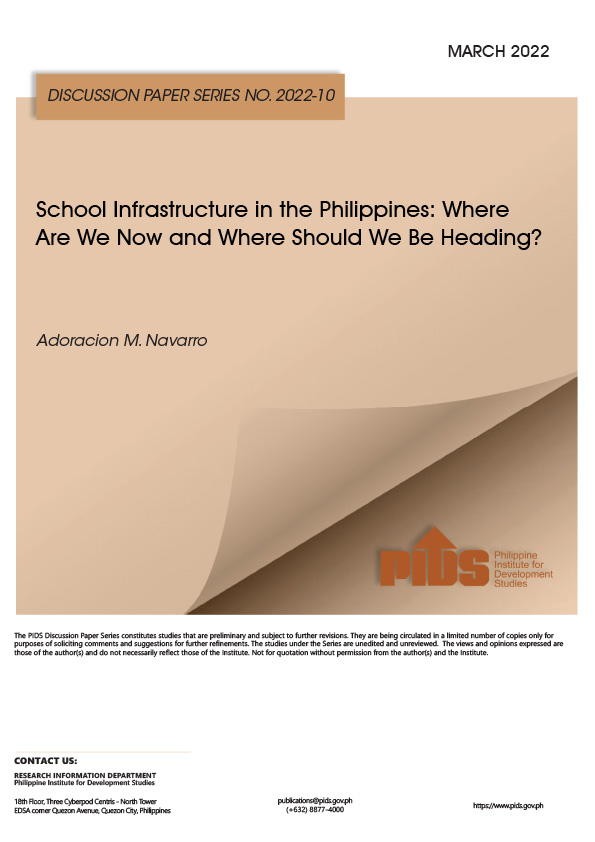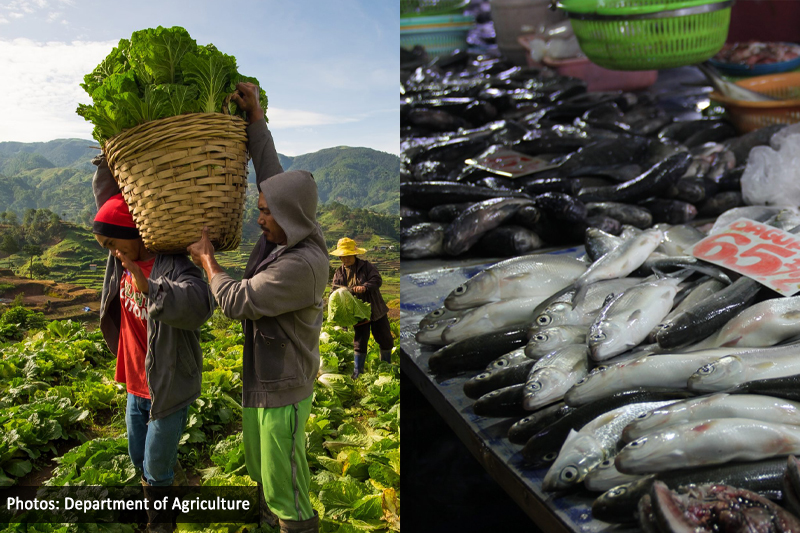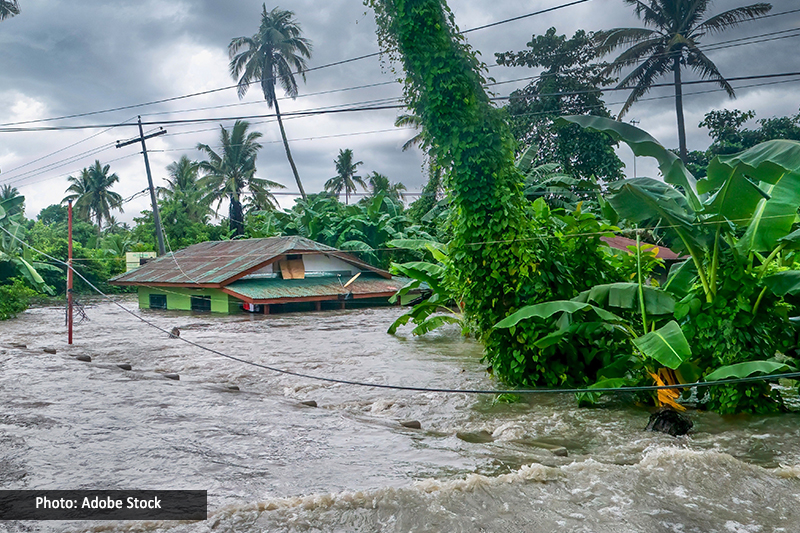After two and a half months of lockdown, the public healthcare system remains unequipped with the necessary weapons to fight COVID-19. The Philippine government imposed a total lockdown dubbed as the “enhanced community quarantine” or ECQ last March 16 after there was a confirmed local transmission of COVID-19. The announcement was totally unprecedented and ill-planned. It caused a lot of confusion among Filipino citizens and even among implementing agencies and local government units.
The basis for this lockdown was to stall the spread of the coronavirus while preparing the needed facilities to fight the disease. Ideally it should be the government’s opportunity to equip the health system with enough facilities and health workers to brace for the second wave of COVID cases. But has the lockdown been truly beneficial in preparing the public health system for the worst of the pandemic that is yet to come?
Under-capacitated
According to a Philippine Institute for Development Studies (PIDS) discussion paper released last April, the country will need a total of 182,000 hospital beds during the peak month in the best case scenario. But as per a recent Department of Health (DOH) situationer, the overall bed capacity of the public health system is only 13,565 which only covers about 7% of the total hospital beds needed. Currently, there are only 2,005 mechanical ventilators available, very far from the estimated 30,000 ventilators that the country will need during the peak of the disease.
When it comes to the health workforce needed, the country will require a total of 88,000 doctors and 118,000 nurses for COVID patients. There are just 52,000 doctors and 351,000 nurses available for all diseases and care, and we cannot of course assume that they should be dedicated to only attend to COVID patients. Again, these estimates are just for the best-case scenario which will only happen if 70% of total symptomatic cases will be isolated. This seems unattainable with the current status or practical non-existence of mass testing and contact tracing.
Unfortunately, the government has failed to maximize its imposed lockdown to fill the existing gaps.
Mass arrests instead of mass testing
Instead of acquiring the necessary equipment and building additional facilities, the government has focused more on restricting people’s mobility and using military forces in enforcing the quarantine. The government has not only been slow – it has also made poor decisions.
Instead of prioritizing mass testing to identify and isolate affected individuals and infusing funds for this, government chose to fully restrict economic activity, which has disrupted people’s livelihoods and incomes.
There was even a time when there were more individuals apprehended and arrested than tested for COVID. According to the Coalition for People’s Right to Health, as of May 3 there were a total of 158,353 quarantine violators, with 42,138 arrests made. Meanwhile, there were only 106,520 unique individuals and 120,736 tests conducted overall.
Plans for checkpoints are more precise than plans for mass testing. There are more checkpoints than testing centers. As of May 29, there were 4,398 quarantine checkpoints and 115 dedicated checkpoints and the police are still planning to add more. As of May 31, there were only 38 licensed reverse transcription-polymeraise chain reaction (RT-PCR) laboratories and 11 licensed GeneExpert laboratories, while 130 laboratory applications are still waiting for approval.
Now as economic activity is slowly opening after a long period of lockdown, citizens’ call for free mass testing has become even louder. But instead of addressing this, the government has only played with semantics – clarifying that it would only conduct “expanded targeted testing” instead of mass testing because it does not have enough capacity for testing the WHOLE Philippine population. This has sparked further outrage among the Filipino people hence the louder call for free mass testing and government accountability.
While government is busy with its vocabulary enrichment games, the Makabayan bloc in the House of Representatives (HOR) filed on May 28 House Bill 6848, the “Free Mass Testing Act of 2020”. But the super-majority Duterte-allied HOR has prioritized the approval of the Anti-Terrorism Bill instead of more COVID-urgent legislative proposals. Apparently, the Duterte government is more concerned now with its critics than the pandemic.
Forgetting the frontliners
The government has prioritized arming the military and weaponizing laws to target activists and critics who have grown disgusted with the lack of government response to COVID. And it has practically neglected the medical frontliners.
Protecting health workers and non-medical frontliners is another area of failure. Massive shortages in personal protective equipment, mask, and other equipment and facilities at the beginning of the outbreak resulted in a huge number of our frontliners being infected by the disease. But now that there are allegedly enough protective covers, the slow bureaucratic process of distribution (plus a hint of corruption) is unjustly affecting our frontline medical workers.
As per latest DOH report, there are 2,606 health workers infected by the disease with 1,172 active cases and a total of 32 casualties. Recent reports even have it that some health workers have not received any of the mandated aid to them, and relatives of health workers who died of COVID have not received the death benefits.
A mere ‘thank you’ will not help our frontliners. The government should do aggressive mass testing – this is also for the sake of our frontliners. Our health workers should be the last ones standing, but what is happening now is without protection they are the ones being sacrificed in the fight.
Ready or not?
The government declaration of lockdown was premature – it lacked a clear plan on how it really intended to contain the spread of coronavirus. It also lacked foresight on how to address the socioeconomic impact of such lockdown on the people. Now, businesses all over the country are pressuring the government to lift the ECQ since the two months of lockdown have entailed huge profit losses.
But more importantly, the poor cannot afford the lockdown anymore. The people should not choose between dying from hunger and dying from the virus – the government must give everything for the people to live. But the government has not even given enough support. The poor are going hungry, they have already endured too much, and their rumbling stomachs are becoming hard to ignore. It is a rumbling social unrest.
On the other hand, the health system was already weak before COVID, but the pandemic only bared how bad the system is. And now that there is urgency to improve it, the government still sticks to its sick policy of relying on the private health system and defaulting on state responsibility. Government action has not only been slow and meager, but the bureaucracy has not prioritized what the people need. And now that the majority of the Filipino working class are getting back to work, government has no clear plan and support on how the workers and low-income earners shall be protected from COVID.
The activists are right after all – we need mass testing, and more so now that economic activity has resumed. It is government responsibility to isolate and treat infected individuals and let the rest of the healthy people be productive. Government should remove the undue stress and anxiety that this disease is giving to the population, let them work with peace of mind that they are fully protected from this disease and from the harsh socioeconomic impact of the lockdown.
The basis for this lockdown was to stall the spread of the coronavirus while preparing the needed facilities to fight the disease. Ideally it should be the government’s opportunity to equip the health system with enough facilities and health workers to brace for the second wave of COVID cases. But has the lockdown been truly beneficial in preparing the public health system for the worst of the pandemic that is yet to come?
Under-capacitated
According to a Philippine Institute for Development Studies (PIDS) discussion paper released last April, the country will need a total of 182,000 hospital beds during the peak month in the best case scenario. But as per a recent Department of Health (DOH) situationer, the overall bed capacity of the public health system is only 13,565 which only covers about 7% of the total hospital beds needed. Currently, there are only 2,005 mechanical ventilators available, very far from the estimated 30,000 ventilators that the country will need during the peak of the disease.
When it comes to the health workforce needed, the country will require a total of 88,000 doctors and 118,000 nurses for COVID patients. There are just 52,000 doctors and 351,000 nurses available for all diseases and care, and we cannot of course assume that they should be dedicated to only attend to COVID patients. Again, these estimates are just for the best-case scenario which will only happen if 70% of total symptomatic cases will be isolated. This seems unattainable with the current status or practical non-existence of mass testing and contact tracing.
Unfortunately, the government has failed to maximize its imposed lockdown to fill the existing gaps.
Mass arrests instead of mass testing
Instead of acquiring the necessary equipment and building additional facilities, the government has focused more on restricting people’s mobility and using military forces in enforcing the quarantine. The government has not only been slow – it has also made poor decisions.
Instead of prioritizing mass testing to identify and isolate affected individuals and infusing funds for this, government chose to fully restrict economic activity, which has disrupted people’s livelihoods and incomes.
There was even a time when there were more individuals apprehended and arrested than tested for COVID. According to the Coalition for People’s Right to Health, as of May 3 there were a total of 158,353 quarantine violators, with 42,138 arrests made. Meanwhile, there were only 106,520 unique individuals and 120,736 tests conducted overall.
Plans for checkpoints are more precise than plans for mass testing. There are more checkpoints than testing centers. As of May 29, there were 4,398 quarantine checkpoints and 115 dedicated checkpoints and the police are still planning to add more. As of May 31, there were only 38 licensed reverse transcription-polymeraise chain reaction (RT-PCR) laboratories and 11 licensed GeneExpert laboratories, while 130 laboratory applications are still waiting for approval.
Now as economic activity is slowly opening after a long period of lockdown, citizens’ call for free mass testing has become even louder. But instead of addressing this, the government has only played with semantics – clarifying that it would only conduct “expanded targeted testing” instead of mass testing because it does not have enough capacity for testing the WHOLE Philippine population. This has sparked further outrage among the Filipino people hence the louder call for free mass testing and government accountability.
While government is busy with its vocabulary enrichment games, the Makabayan bloc in the House of Representatives (HOR) filed on May 28 House Bill 6848, the “Free Mass Testing Act of 2020”. But the super-majority Duterte-allied HOR has prioritized the approval of the Anti-Terrorism Bill instead of more COVID-urgent legislative proposals. Apparently, the Duterte government is more concerned now with its critics than the pandemic.
Forgetting the frontliners
The government has prioritized arming the military and weaponizing laws to target activists and critics who have grown disgusted with the lack of government response to COVID. And it has practically neglected the medical frontliners.
Protecting health workers and non-medical frontliners is another area of failure. Massive shortages in personal protective equipment, mask, and other equipment and facilities at the beginning of the outbreak resulted in a huge number of our frontliners being infected by the disease. But now that there are allegedly enough protective covers, the slow bureaucratic process of distribution (plus a hint of corruption) is unjustly affecting our frontline medical workers.
As per latest DOH report, there are 2,606 health workers infected by the disease with 1,172 active cases and a total of 32 casualties. Recent reports even have it that some health workers have not received any of the mandated aid to them, and relatives of health workers who died of COVID have not received the death benefits.
A mere ‘thank you’ will not help our frontliners. The government should do aggressive mass testing – this is also for the sake of our frontliners. Our health workers should be the last ones standing, but what is happening now is without protection they are the ones being sacrificed in the fight.
Ready or not?
The government declaration of lockdown was premature – it lacked a clear plan on how it really intended to contain the spread of coronavirus. It also lacked foresight on how to address the socioeconomic impact of such lockdown on the people. Now, businesses all over the country are pressuring the government to lift the ECQ since the two months of lockdown have entailed huge profit losses.
But more importantly, the poor cannot afford the lockdown anymore. The people should not choose between dying from hunger and dying from the virus – the government must give everything for the people to live. But the government has not even given enough support. The poor are going hungry, they have already endured too much, and their rumbling stomachs are becoming hard to ignore. It is a rumbling social unrest.
On the other hand, the health system was already weak before COVID, but the pandemic only bared how bad the system is. And now that there is urgency to improve it, the government still sticks to its sick policy of relying on the private health system and defaulting on state responsibility. Government action has not only been slow and meager, but the bureaucracy has not prioritized what the people need. And now that the majority of the Filipino working class are getting back to work, government has no clear plan and support on how the workers and low-income earners shall be protected from COVID.
The activists are right after all – we need mass testing, and more so now that economic activity has resumed. It is government responsibility to isolate and treat infected individuals and let the rest of the healthy people be productive. Government should remove the undue stress and anxiety that this disease is giving to the population, let them work with peace of mind that they are fully protected from this disease and from the harsh socioeconomic impact of the lockdown.









